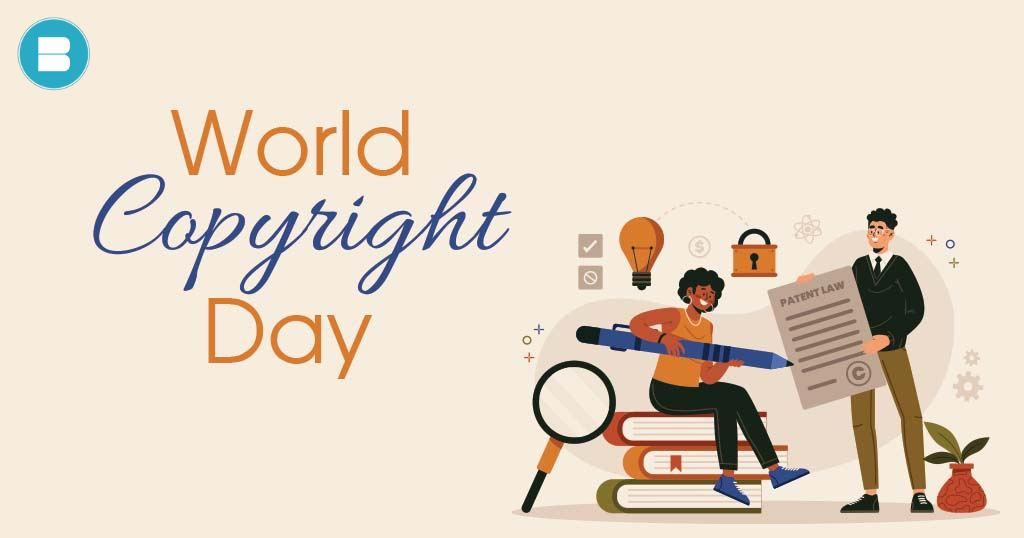
World Copyright Day – 23rd April 2024
World Copyright Day, also known as World Intellectual Property Day, is an annual event that is celebrated on April 23rd every year. It is a global observance that seeks to raise awareness about the importance of copyright laws and their role in promoting creativity, innovation, and economic growth. World Copyright Day or World Book Day is an opportunity to recognize the contributions of creators and the value of their intellectual property, while also emphasizing the need for protection against copyright infringement. Join the celebration of World Copyright Day by learning more about the significance of copyright laws in today’s digital age and supporting the efforts to protect the creative works of artists, writers, musicians, and other creators around the world. What is Copyright? Copyright is a legal concept that gives creators and owners of original works the exclusive right to use, reproduce, distribute, display, and perform their works. Copyright protection applies to a wide range of creative works, including literature, art, music, films, and software. Read: An Essential Guide on How to Copyright a Book in India? The purpose of copyright is to protect the rights of creators and to encourage the creation of new works by providing a legal framework for protecting their intellectual property. It also ensures that creators are fairly compensated for their efforts by giving them control over how their works are used and distributed. Copyright protection is usually granted for a fixed period of time, after which the works enter the public domain and can be used freely by anyone. What are the criteria of copyrights? To be eligible for copyright protection, a work must meet certain criteria. These criteria can vary slightly depending on the country or region, but they generally include the following: Originality: The work must be original and not a copy of someone else’s work. It must be the result of the author’s own creativity and skill. Fixation: The work must be fixed in a tangible form that is perceptible either directly or with the aid of a machine or device. This can include written or printed material, artwork, photographs, films, or recordings. Creativity: The work must exhibit some degree of creativity, meaning that it reflects some originality or individual expression on the part of the creator. Novelty: The work must be new or original in some way, meaning that it should not be an exact copy of a previously published or copyrighted work. Tangibility: The work must exist in a physical or digital form that can be perceived, reproduced, or communicated. Copyrightability: The work must fall under one of the categories of works that are eligible for copyright protection, such as literary works, musical works, artistic works, and audiovisual works. These criteria are designed to ensure that copyright protection is reserved for original and creative works, and not for works that are merely functional or utilitarian in nature. By meeting these criteria, creators can secure the exclusive rights to use, distribute, and profit from their works, while also protecting their intellectual property from unauthorized use or infringement. What is World Copyright Day and Why it is celebrated? World Copyright Day is an annual event celebrated globally on April 23rd to recognize the importance of copyright protection and the role it plays in promoting creativity, innovation, and cultural diversity. This day is an opportunity for creators, publishers, policymakers, and the general public to reflect on the value of copyright and the need to protect it. Read: A complete step by step guide – How to self publish a book for free. In 2000, the United Nations Educational, Scientific and Cultural Organization (UNESCO) declared April 23rd as World Book and Copyright Day to coincide with the anniversary of the deaths of William Shakespeare, Miguel de Cervantes, and Inca Garcilaso de la Vega, all of whom are considered to be major figures in world literature. The purpose of this day is to recognize the importance of books and reading in promoting cultural diversity, mutual understanding, and the dissemination of knowledge. Since then, World Copyright Day has become an integral part of the global celebration. It provides an opportunity for individuals and organizations to reflect on the importance of copyright protection and to raise awareness about the value of intellectual property. It also serves as a reminder of the role that books and reading play in promoting creativity, cultural heritage, and knowledge-sharing. The celebration of World Copyright Day provides an opportunity to highlight the benefits of copyright protection for creators, consumers, and society as a whole. Copyright protection not only promotes creativity but also encourages the dissemination of knowledge and ideas, leading to greater innovation and progress. It also ensures that creators are compensated for their efforts, which in turn enables them to continue producing high-quality work. One of the key challenges facing copyright protection today is the issue of piracy and infringement. With the rise of digital technology and the internet, it has become increasingly easy for individuals to copy, distribute, and even sell copyrighted material without permission. This not only deprives creators of their rightful earnings but also undermines the integrity of the creative process and discourages innovation. To address this issue, many countries have enacted laws and regulations to protect copyright, while also promoting digital innovation and access to information. For example, the Digital Millennium Copyright Act (DMCA) in the United States provides a framework for protecting copyrighted material online, while the European Union’s Copyright Directive seeks to establish a more level playing field for creators and platforms in the digital marketplace. In addition to legal measures, there are also many initiatives aimed at raising awareness about the importance of copyright protection and promoting a culture of respect for intellectual property. For example, the Creative Commons movement provides a framework for creators to share their work while retaining some control over how it is used and distributed. This allows for greater collaboration and innovation, while also ensuring that creators receive credit for their contributions. Read: Here’s a list of Top 7 Poetry Books to…
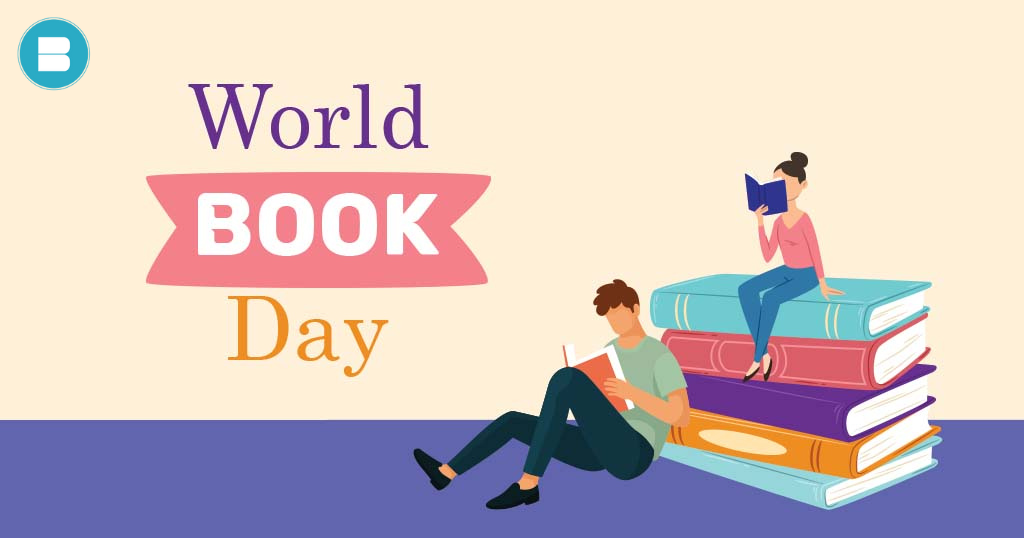
World Book Day – 23rd April 2024
“The magic is only in what books say, how they stitched the patches of the universe together into one garment for us.” – Ray Bradbury, Fahrenheit 451 What is a book? A book is a portal to new worlds, a treasure trove of knowledge, and a vessel of human imagination. It is a physical or digital embodiment of ideas, stories, and information, carefully crafted and bound together for posterity. Books can be works of fiction or non-fiction, poetry or prose, textbooks or biographies, and their forms continue to evolve with technology. Read: What is a Dialogue? Elements of Creative Writing. Whether flipping through pages made of paper or scrolling through an e-reader, books are a fundamental aspect of our culture, connecting us with the past and providing insight into the future. They have the power to ignite curiosity, spark creativity, and enrich our lives in countless ways. Why should books be celebrated? Books should be revered for their intrinsic worth in shaping human culture and their ability to educate, motivate and entertain us. These timeless treasures serve as a conduit to impart knowledge, stories, and ideas from one generation to another, making them a priceless asset. Through books, we can enhance our critical thinking skills, expand our vocabulary and refine our communication abilities. Moreover, books allow us to escape reality and venture into unexplored worlds, granting us an opportunity to experience diverse cultures and perspectives. Whether we are seeking comfort, inspiration or guidance during tough times, books are a reliable source. Celebrating books is a recognition of their power and influence in our lives and society, and it encourages us and others to relish the world of literature. So to make sure it is well-celebrated, UNESCO made sure books aren’t forgotten… World Book Day, initiated by UNESCO, celebrates books as a form of cultural expression, promotes reading habits, and advocates for access to books for everyone. Since its inception in 1995, this day has been celebrated in over 100 countries worldwide. April 23rd marks the passing of three literary giants who continue to inspire readers and writers across the world: William Shakespeare, Miguel de Cervantes, and Inca Garcilaso de la Vega. Shakespeare, the English playwright and poet, is celebrated for his enduring contributions to the English language and literature, while Cervantes, the Spanish writer, is renowned for his masterpiece “Don Quixote”. Meanwhile, Garcilaso de la Vega, the Peruvian writer and historian, is recognized as a pioneer in the literary history of the Americas. In recognition of the significant impact of these literary legends, UNESCO designated April 23rd as World Book and Copyright Day in 1995. Read: Book Review – Realization Makes Improvement a Book by Tamanna Khan This special day is now celebrated globally to promote reading, publishing, and copyright laws, and to honor the enduring legacies of these writers and their profound impact on the world’s cultural heritage. It is a day for all book lovers to come together and celebrate the joy and power of reading, and to reflect on the vital role of writers and their works in shaping our world. It celebrates the power of books to educate, stimulate imagination and creativity, and provide a source of entertainment and comfort. Events to promote reading, such as book fairs, author visits, and reading challenges, are organized by schools and libraries in many countries. Publishers and booksellers offer discounts and book giveaways to encourage book purchases, while book tokens are distributed to children in exchange for a free book. Schools encourage students to dress up as their favorite book characters and hold book swaps. One of the most common events organized by schools and libraries is the book fair. During book fairs, publishers and booksellers set up stalls to showcase their latest publications, and visitors can browse through a wide range of books from different genres and authors. Book fairs are an excellent way to promote reading and encourage book purchases, as publishers and booksellers often offer discounts and book giveaways during the event. Another popular event organized during World Reading Day is author visits. Schools and libraries invite authors to visit and speak to students about their books and the writing process. Author visits provide a unique opportunity for students to engage with the author and learn about the creative process of writing. Students can also ask questions and gain insights into the world of publishing and literature. Reading challenges are another exciting way to promote reading during World Book Day. Schools and libraries often set reading challenges for students, encouraging them to read a specific number of books or explore different genres. Reading challenges help to instill a love of reading and encourage students to discover new books and authors. To further promote reading, book tokens are distributed to children in exchange for a free book. Book tokens can be used to purchase a book from a participating bookseller or to access free books online. This initiative is an excellent way to promote reading and encourage children to read more books. Finally, schools encourage students to dress up as their favorite book characters and hold book swaps during National Book Day. Dressing up as a book character is a fun way to engage students in reading and promote the joy of literature. Book swaps provide an opportunity for students to exchange books with their peers, encouraging them to explore different genres and authors. Read: List of Top 10 Most Successful Mythology Fiction eBooks of All Time. Famous Themes of World Book Day Some of the themes of World Book Day that have been celebrated in the past include: Share a Story – This theme encourages people to share stories with others, especially children. It aims to promote the joy of reading and storytelling, and to emphasize the importance of passing on stories and traditions from generation to generation. Reading is Power – This theme highlights the power of reading and literacy in shaping people’s lives and empowering them to achieve their goals. It aims to inspire people to develop a love for reading and…
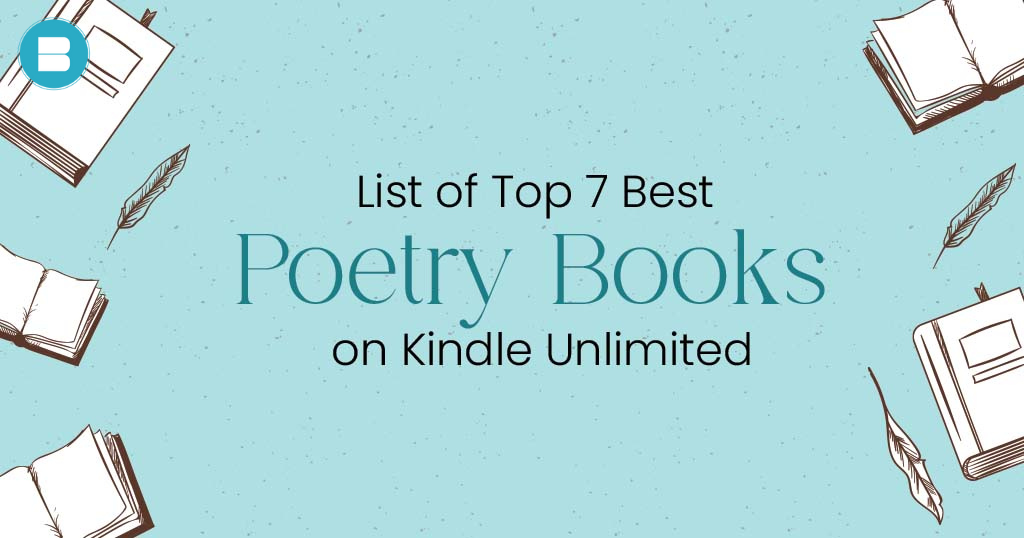
List of Top 7 Best Poetry Books to Read on Kindle
Looking for best Kindle Poetry books to Read? We got them for you A poem is a magical arrangement of words that speaks to the heart and mind of the reader. It is an artistic expression that has the power to evoke emotions, capture fleeting moments, and tell stories in a condensed and rhythmic form. Unlike other forms of literature, poetry celebrates the beauty of language and challenges the reader to explore the depths of their imagination. The essence of poetry lies in its use of figurative language, which transforms ordinary words into extraordinary images. Metaphors, similes, and personification are just some of the tools that poets use to create a vivid and memorable experience for their readers. The rhythm and sound of the words used in poetry add to its beauty and make it a form of literature that can be appreciated both for its meaning and for its musicality. Read: Everything to know about Foire Internationale du Livre de Tunis (April 28th – May 7th) 2023 Poetry takes many different shapes and forms, each with its own unique style and structure. From traditional forms such as sonnets and haikus to experimental free verse, each poem is an exploration of language and creativity. Some poems have a strict rhyme scheme and meter, while others are more flexible, allowing the poet to explore the meaning of their words in a more fluid way. Poetry has a long and rich history, dating back to the earliest forms of human expression. Throughout history, poets have used their craft to express a wide range of emotions and ideas, from love and loss to social commentary and political protest. Whether it is a simple rhyme or a complex epic, a poem has the power to touch the soul and leave a lasting impression on the reader. It is an art form that celebrates the beauty and power of words and inspires us to explore the world around us with fresh eyes and an open heart. So here we bring you a list of 7 best poetry books to read on kindle unlimited – “Leaves of Grass” by Walt Whitman “The Waste Land and Other Poems” by T.S. Eliot “Ariel” by Sylvia Plath “The Sun and Her Flowers” by Rupi Kaur “The Essential Rumi” by Jalal al-Din Rumi “Moon, Snakes, Love, and other poems” by Lakshmi Ambady “My Dying Conscience” by Rashmi Trivedi “Leaves of Grass” by Walt Whitman “Leaves of Grass” is a poetry collection by American poet Walt Whitman. First published in 1855, the book is known for its free verse style and celebration of the human body and spirit. Whitman’s writing is often seen as a departure from traditional poetic structures, as he experimented with long lines and a lack of punctuation, creating a sense of fluidity and freedom. The collection is divided into different sections, each exploring different themes and ideas. One of the most famous poems in the collection is “Song of Myself,” which celebrates the beauty and diversity of the American landscape, as well as the unity of all people. Other poems in the collection explore themes of love, death, nature, and spirituality. Over the years, “Leaves of Grass” has become a highly influential work in American literature, inspiring many poets and writers to experiment with new forms and styles. Whitman’s celebration of individualism and democracy has also had a significant impact on American culture and identity. Despite its initial controversial reception, “Leaves of Grass” is now considered a masterpiece of American poetry and a landmark in the development of modernist literature. You may also like: 5 Affordable Tools Easy Book Formatting and Design “Leaves of Grass” by Walt Whitman kindle – Best Poetry Books to read on kindle “The Waste Land and Other Poems” by T.S. Eliot “The Waste Land and Other Poems” is a collection of poems by T.S. Eliot, published in 1922. The most famous and influential work in the collection is the title poem, “The Waste Land,” which is considered one of the most important poems of the 20th century. The collection includes a range of poems that explore themes of disillusionment, decay, and the fragmentation of modern society. Many of the poems are characterized by a sense of despair and a questioning of traditional values and beliefs. In “The Waste Land,” Eliot draws on a range of literary and cultural references, including Shakespeare, Dante, and Hindu mythology, to create a complex and fragmented portrait of a world in crisis. The poem is known for its use of multiple voices and languages, as well as its innovative use of literary techniques such as stream of consciousness and collage. Other notable poems in the collection include “The Love Song of J. Alfred Prufrock,” which explores the theme of isolation and the struggles of modernity, and “Gerontion,” which presents a bleak and cynical view of the world. You may also like: Quilbot Review: Can It Really, Improve Your Writing in Literature? “”The Waste Land and Other Poems” by T.S. Eliot – Best Poetry Books to read on kindle “Ariel” by Sylvia Plath “Ariel” is a collection of poems written by the renowned American poet Sylvia Plath, which was first published posthumously in 1965. The collection includes some of Plath’s most famous and powerful poems, many of which were written in the final months of her life. The poems in “Ariel” deal with a wide range of themes, including love, loss, death, and mental illness. Plath’s distinctive voice and intense emotional expression are evident throughout the collection. The title poem, “Ariel,” is a particularly powerful and haunting work, in which Plath describes a ride on a horse that is simultaneously exhilarating and terrifying, a metaphor for her own life and struggles. The poems in “Ariel” are characterized by their vivid imagery, complex metaphors, and precise language. Plath often uses natural imagery to explore her own psychological state, and her mastery of language and form is evident throughout the collection. “Ariel” is considered one of Plath’s most important works and a significant…
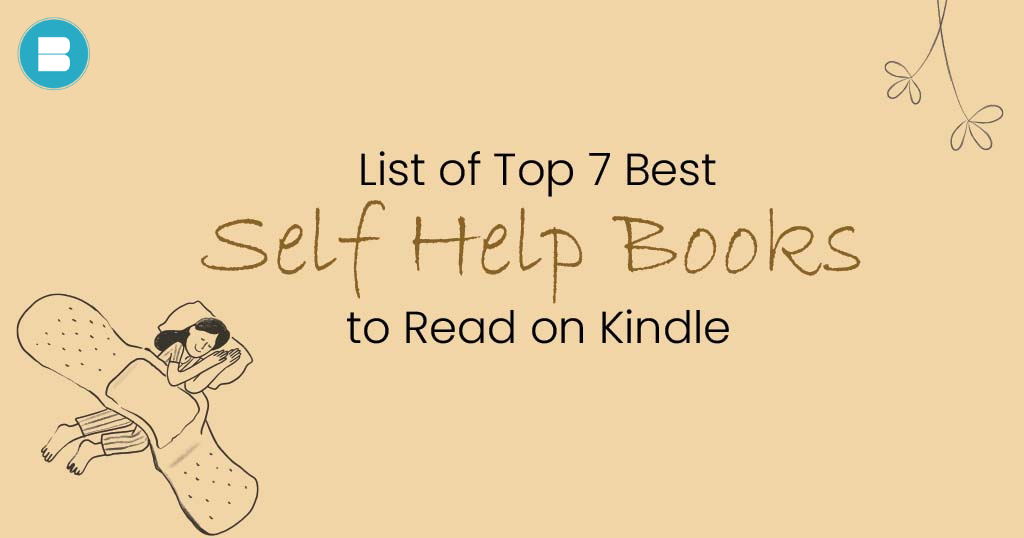
List of Top 7 Best Self Help Books to Read on Kindle
Looking for best Kindle Self Help books to Read? We got them for you. Self-help is the spark that ignites the flame of personal growth and fulfillment. It is a journey that one embarks on with the aim of improving their life and well-being, and ultimately achieving their full potential. Self-help is not a one-size-fits-all approach, but rather a personalized process that involves taking ownership of one’s own growth and development. Through self-help, individuals learn to take responsibility for their lives and to make positive changes that will lead to a more fulfilling existence. This process can be achieved through various techniques such as self-reflection, goal-setting, positive affirmations, meditation, and reading self-help books. It is about discovering the strengths and weaknesses within oneself and taking action to improve upon them. Read: Everything to know about Foire Internationale du Livre de Tunis (April 28th – May 7th) 2023 Self-help is not a quick fix, but rather a continuous effort that requires dedication and commitment. It requires a willingness to step out of one’s comfort zone and to take risks in order to achieve personal growth. It is about having the courage to face one’s fears and to overcome obstacles that may stand in the way of achieving success. The beauty of self-help is that it is a journey that can be embarked upon by anyone, regardless of their background or circumstances. It is about taking control of one’s own life and creating a path to a better future. It is a journey that is empowering, liberating, and fulfilling. Self-help is one of growing reader base of the 21st Century so lets look at the top 7 best self-help books to read on Kindle – “The 7 Habits of Highly Effective People” by Stephen R. Covey “Think and Grow Rich” by Napoleon Hill “Atomic Habits” by James Clear “The Power of Now” by Eckhart Tolle “Man’s Search for Meaning” by Viktor E. Frankl “Career Mastery” by Shubham Shukla “Be a Monk” by Chetan Prabhakar “The 7 Habits of Highly Effective People” by Stephen R. Covey “The 7 Habits of Highly Effective People” is one of the best self-help book which is written by Stephen R. Covey that has inspired millions of people worldwide to achieve their goals and improve their lives. The self help book is based on Covey’s belief that personal and interpersonal effectiveness are interdependent and that individuals can achieve both by developing seven core habits. The first three habits focus on personal growth and self-mastery, starting with being proactive and taking responsibility for one’s life. The second habit emphasizes beginning with the end in mind, setting goals and creating a clear vision for one’s life. The third habit is about putting first things first, prioritizing and organizing one’s time to focus on what truly matters. The next three habits focus on building strong relationships and effective communication with others. The fourth habit emphasizes thinking win-win, seeking mutually beneficial solutions in all interactions. The fifth habit emphasizes seeking first to understand, then to be understood, by actively listening to others and seeking to understand their perspective. The sixth habit is about synergizing, working collaboratively with others to achieve greater outcomes than one could alone. The seventh habit is about continuously renewing oneself through self-care and personal growth. This involves taking care of one’s physical, emotional, mental, and spiritual well-being and investing in continuous learning and improvement. “The 7 Habits of Highly Effective People” by Stephen R. Covey. Best Self Help Books to Read on Kindle. You may also read: What is Upfront Fiction? Definition, Traits and Examples “Think and Grow Rich” by Napoleon Hill “Think and Grow Rich” is a classic self-help book that was first published in 1937 by author Napoleon Hill. The book is based on Hill’s extensive research into the lives of successful individuals and their strategies for achieving greatness. The central theme of the book is the power of positive thinking and the ability to transform one’s thoughts into tangible achievements. The book is divided into thirteen chapters, each of which explores different principles for achieving success. Hill emphasizes the importance of having a clear vision of one’s goals and dreams, and the importance of developing a burning desire to achieve them. He also emphasizes the importance of persistence and the ability to overcome setbacks and failures on the road to success. One of the key principles of the book is the concept of the “mastermind,” which refers to the power of collaboration and cooperation among like-minded individuals. Hill argues that no one person can achieve great success alone, and that success often comes through the support and collaboration of others. Throughout the book, Hill offers practical advice and strategies for achieving success in a variety of areas, from business and finance to personal relationships and self-improvement. He encourages readers to take responsibility for their own success and to develop a positive mindset that is focused on growth and progress. You may also like: Audible Titles vs. Physical Books: Which One is Best for you? “Think and Grow Rich” by Napoleon Hill Best Self Help Books to Read on Kindle. “Atomic Habits” by James Clear “Atomic Habits” is a bestselling self-help book written by James Clear, published in 2018. The book is focused on the idea that small, consistent improvements in our habits can lead to significant changes in our lives over time. Clear presents a framework for building and sustaining good habits, as well as breaking bad habits, using the concept of “atomic habits.”The book is divided into four parts: The Fundamentals – Clear explains the importance of habits and how they shape our identity. The 4 Laws of Behavior Change – Clear presents four principles for building good habits and breaking bad ones: make it obvious, make it attractive, make it easy, and make it satisfying. The 4 Steps of Habit Formation – Clear outlines the four stages of habit formation: cue, craving, response, and reward. Advanced Techniques – Clear discusses how to optimize our habits and make them stick, even…
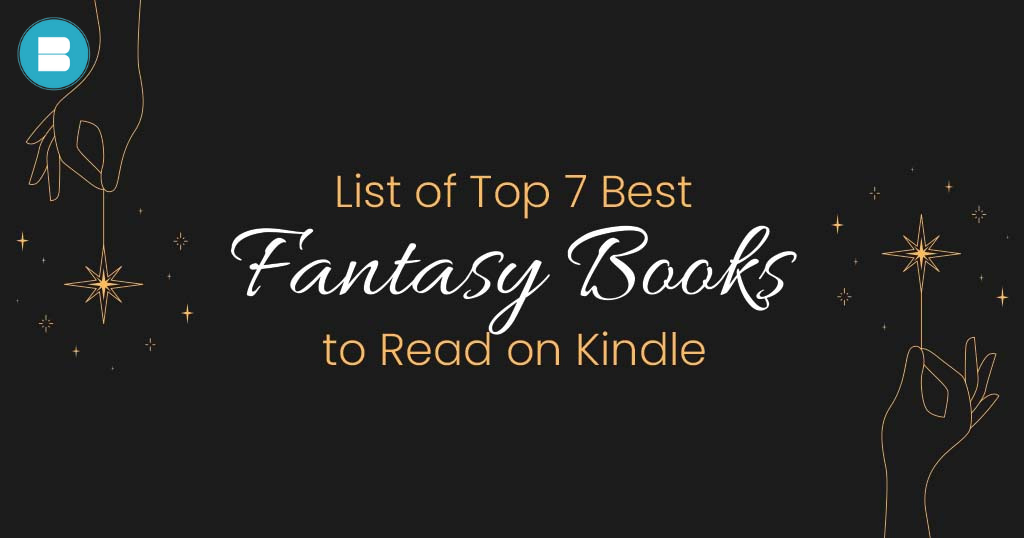
List of Top 7 Best Fantasy Books to Read on Kindle
Looking for best Kindle fantasy books to Read? We got them for you. Fantasy is a realm where the limits of reality are cast aside, and the wildest of imaginations take flight. It’s a genre of literature, film, and other forms of media that takes us on journeys through fantastical worlds filled with mystical creatures, magical powers, and supernatural events. In the fantastical realm, authors and creators have the freedom to create and shape their own unique worlds, where the impossible becomes possible. These worlds are often filled with mythical creatures, from dragons and unicorns to elves and fairies. And the characters that inhabit these worlds may have magical powers or be involved in events that are beyond the scope of our reality. Read: Everything to know about Foire Internationale du Livre de Tunis (April 28th – May 7th) 2023 Fantasy stories are often inspired by folklore, mythology, and legends, with a blend of science fiction and horror elements. They take us on quests that challenge our heroes to overcome insurmountable odds, and battles between good and evil that test their strength, courage, and resolve. The genre is also rich in coming-of-age stories, where young heroes discover their place in the world and embark on epic journeys of self-discovery. Through the power of imagination, fantasy has the ability to captivate audiences of all ages and transport them to worlds beyond their wildest dreams. The genre has been a source of inspiration for generations, fueling our creativity, and reminding us that anything is possible. From the pages of books to the screens of movies and TV shows, fantasy continues to enchant and delight, taking us on unforgettable adventures through realms beyond our own. Fantasy is one of growing reader base of the 21st Century so lets look at the top 7 best fantasy books to read on Kindle – “The Name of the Wind” by Patrick Rothfuss “The Way of Kings” by Brandon Sanderson “Shadow and Bone” by Leigh Bardugo “The Hunger Games” by Suzanne Collins “The Blade Itself” by Joe Abercrombie “The Final Empire” by Brandon Sanderson “The Droid” by Mayank Sinha To Self-Publish your Dream Fantasy eBook… Publish Now “The Name of the Wind” by Patrick Rothfuss “Words are pale shadows of forgotten names. As names have power, words have power. Words can light fires in the minds of men. Words can wring tears from the hardest hearts.” It is a mesmerizing tale of a young boy’s journey to becoming a legend. It is a story filled with magic, adventure, and heartache, where the lines between reality and fantasy blur. The book takes place in a world where magic is real and powerful, and our hero, Kvothe, is a gifted and quick-witted young man who is determined to uncover the secrets of the world around him. Kvothe’s journey takes him from a humble upbringing in a traveling troupe of performers to the prestigious University, where he hones his magical abilities and confronts the mysteries of the past. Along the way, Kvothe faces many challenges, both physical and emotional. He battles powerful adversaries, navigates complex relationships, and grapples with the demons of his past. But through it all, he never loses sight of his ultimate goal: to uncover the truth behind the legends that have shaped his world and become a legend in his own right. Rothfuss’s prose is elegant and evocative, transporting readers to a world that feels both familiar and alien. His characters are richly drawn and complex, and his world-building is masterful. From the bustling streets of Tarbean to the mysterious halls of the University, “The Name of the Wind” is a book that immerses readers in a fully-realized world that feels both epic and intimate. “The Name of the Wind” by Patrick Rothfuss Best Fantasy Book to Read on Kindle. “The Way of Kings” by Brandon Sanderson “To lack feeling is to be dead, but to act on every feeling is to be a child.” “The Way of Kings” by Brandon Sanderson is an epic tale that takes readers on a journey through a world of magic, political intrigue, and epic battles. It is a book that immerses readers in a fully-realized world that feels both epic and intimate. The story takes place on the world of Roshar, where powerful magical storms scour the land and the ruling class of knights protect humanity from the alien Parshendi. At the heart of the story is Kaladin, a former soldier who has become a slave, and his quest for redemption. Along the way, he encounters a diverse cast of characters, including the noblewoman Shallan, who is seeking to unravel a mystery that could change the course of history. As the story unfolds, Sanderson weaves together intricate plot threads and explores complex themes of power, sacrifice, and redemption. The book is filled with intense action sequences, heart-wrenching moments of loss, and breathtaking revelations that will keep readers on the edge of their seats. “The Way of Kings” is also a masterclass in world-building, with its intricate magic systems, unique cultures, and vivid landscapes. Sanderson’s prose is elegant and immersive, and he has created a world that feels both familiar and alien, with its blend of medieval and futuristic technologies. You may also like: Effective Book Marketing Strategies 2024 “The Way of Kings” by Brandon Sanderson. Best Fantasy Book to Read. “Shadow and Bone” by Leigh Bardugo The world of Ravka is shrouded in darkness, split apart by the infamous Shadow Fold. It is a land where magic reigns supreme, and the Grisha are the magical elite. Alina Starkov, a young soldier and orphan, finds herself thrust into this world when she discovers her ability to summon light, making her a Grisha. The royal court takes her in, where she trains to hone her magical abilities, unaware of the political power plays unfolding around her. Alina finds herself embroiled in a deadly game of politics as different factions vie to control her powerful abilities for their own gain. As she navigates…
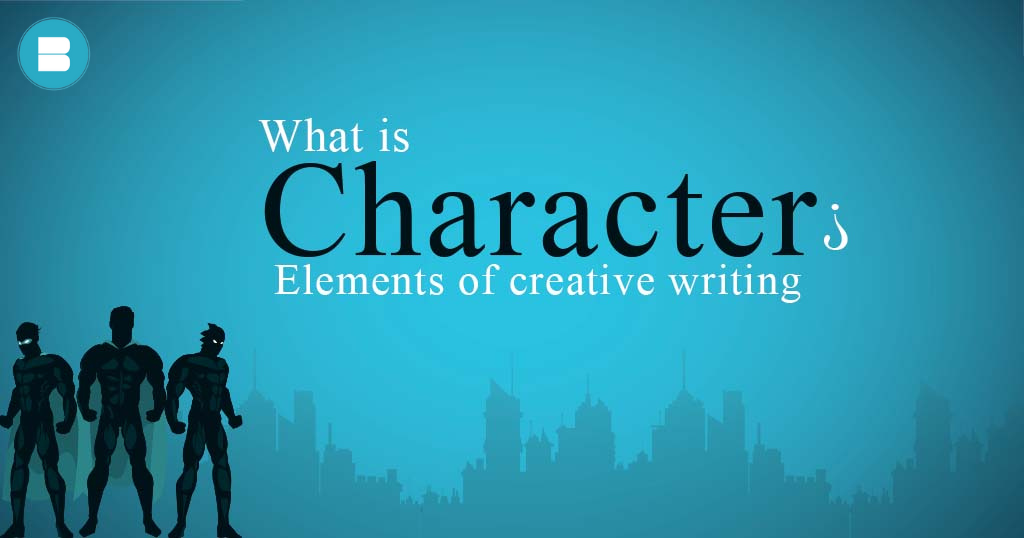
What is character? Elements of creative writing
People usually have a doubt what is character? Characters are the beating heart of creative writing, breathing life into the story with their presence. They can be people, animals, or even abstract entities, conjured up by the writer’s imagination or inspired by real-life individuals. These figures propel the narrative forward, their actions, thoughts, emotions, and interactions weaving together to create a compelling tale. In crafting characters, the writer must bring to life their physical attributes, personality quirks, motivations, and relationships with other characters. Read: Here’s a list of 10 best action eBooks of all time. The most captivating characters are those who are multi-dimensional and nuanced, capable of evoking a range of emotions in the reader and drawing them into the story’s unfolding drama. There are several kinds of characters in a story other than ‘hero’ and ‘villain’. Each and every character moulds the story but most importantly they mould the main characters to become readers’ choices. So here are different kinds of characters that you may find in your favourite novel: Protagonist: The main character around whom the story revolves. Examples include Harry Potter in the Harry Potter series, Katniss Everdeen in The Hunger Games, and Elizabeth Bennet in Pride and Prejudice. Antagonist: The character or force that opposes the protagonist, creating conflict and tension. Examples include Voldemort in the Harry Potter series, President Snow in The Hunger Games, and Lady Catherine de Bourgh in Pride and Prejudice. Supporting characters: These characters are secondary to the protagonist and the antagonist, but they play a significant role in the story’s development and often provide insight into the main characters. Examples include Ron and Hermione in the Harry Potter series, Gale and Peeta in The Hunger Games, and Mr. Darcy and Mr. Bingley in Pride and Prejudice. Static characters: These characters remain the same throughout the story and do not undergo significant changes. An example is Mrs. Bennet in Pride and Prejudice, who remains focused on marrying off her daughters and maintaining social status, despite events and developments in the story. Dynamic characters: These characters undergo significant changes throughout the story, often due to events or interactions with other characters. An example is Ebenezer Scrooge in A Christmas Carol, who transforms from a miserly and selfish person to one who is generous and kind, after being visited by the Ghosts of Christmas Past, Present, and Yet to Come. Round characters: These characters are complex and multifaceted, with depth and nuance that make them feel like real people. An example is Holden Caulfield in The Catcher in the Rye, who is rebellious and vulnerable, struggling with identity and adulthood. Flat characters: These characters are one-dimensional and lack depth, serving more as plot devices than fully realized individuals. An example is the evil stepmother in Cinderella, who exists solely to create obstacles for the protagonist. Stock characters: These characters embody familiar and predictable traits, such as the wise old mentor or the bumbling sidekick. Examples include Yoda in Star Wars as the wise mentor and Ron Weasley in the Harry Potter series as the loyal but often clumsy friend. Foil characters: These characters are used to highlight or contrast with the traits of another character, often the protagonist. An example is Mercutio in Romeo and Juliet, who serves as a foil to Romeo by being witty, cynical, and unromantic. Symbolic characters: These characters represent abstract concepts or ideas, such as Death or Love. An example is the character of Death in The Book Thief, who is personified and represents the inevitability of mortality. You may also read: How to Write an Author Bio | BlueRoseOne A character becomes enchanting for a reader when they are intricately woven, relatable, and captivating. There are various factors that can make a character remarkable: Depth: Characters that have layers, depth and exhibit an array of emotions are more fascinating than those that are superficial or cliché. Readers are drawn to characters who have strengths and weaknesses, and whose behavior contradicts their beliefs. Relatability: A character who faces situations, emotions, and circumstances that readers can easily identify with can form a deep connection with the reader. When a reader can put themselves in the shoes of the character, the character becomes more tangible, and the story more immersive. Proactivity: A character who is proactive and initiates action is more compelling than one who is passive or reactive. A character who makes choices, takes risks, and embraces the consequences of their actions can make the reader feel invested in the story. Development: A character who evolves over time can be gratifying for readers. Observing a character surmounting obstacles, learning from past experiences, and adapting to changes can create a sense of attachment and emotional gratification. Distinctive traits: A character who has a distinct personality, voice, or viewpoint can be memorable and enthralling for readers. Characters that have a unique way of expressing themselves, whether it’s through their dialogue, thoughts, or behavior, can make them stand out in the reader’s mind. Read: What is BookTube? Popular types of content found on Booktube You may also like: Left Behind Series Books in Order: Where to Begin In essence, a remarkable character makes the reader feel engrossed, captivated, and invested in the story. To sum it up, a character is a vital ingredient in any narrative. They propel the story forward with their actions, emotions, thoughts, and interactions with others. Characters can be diverse, from the lead protagonist to the supporting cast, and can be categorized based on their role and personality traits. The hallmark of a well-written character is that they are multi-dimensional, relatable, and evoke emotions in the reader, engrossing them in the story. Ultimately, a remarkable character is one that leaves an indelible impression on the reader’s psyche, prompting them to reflect, empathize, and follow the character’s journey. Publish your book for free with BlueRoseONE and become a bestselling author. Don’t let your dream of becoming an author fade away, grab the opportunity now and publish your book – be it fiction, non fiction, poetry or more.
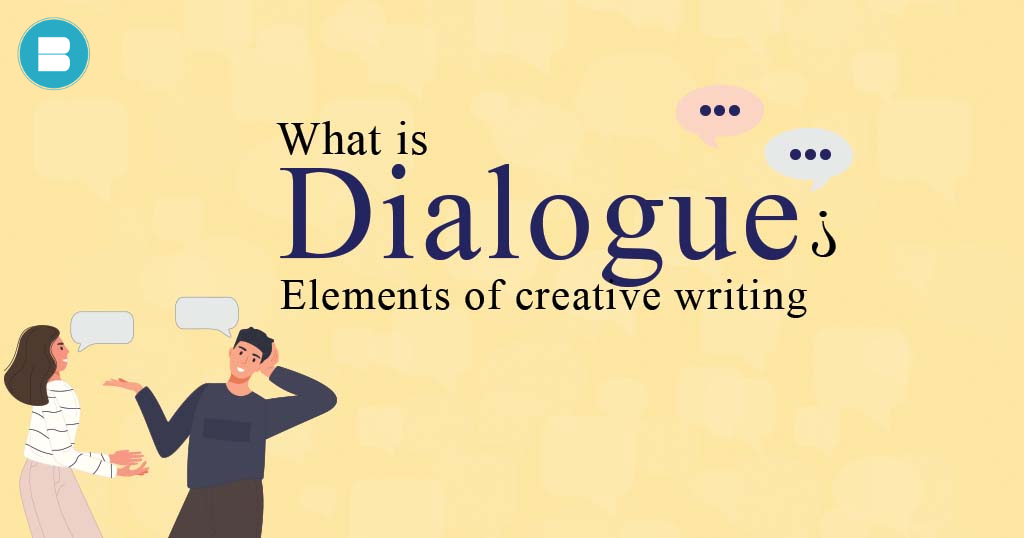
What is Dialogue? Elements of Creative Writing
People usually have a doubt what is dialogue? Dialogue is an artful expression in the literature that brings characters to life through spoken words. It serves as a medium of communication, unveiling their deepest thoughts, emotions, and motivations. With its power to advance the plot, establish relationships, and create tension, dialogue adds a dimension of reality to the narrative. Dialogue can be written in several styles, including direct speech, indirect speech, or free indirect speech, and can be a mixture of them. It also varies in the form of the speech given by the characters, such as monologue, soliloquy, dialect, interior dialogue, and subtextual dialogue. You may also like: What is Historical Fiction? Definition, Characteristics and Impact There are several types of dialogues that can be used in creative writing. Here are some examples: Direct dialogue: This is the most common type of dialogue, in which characters speak directly to each other, usually using quotation marks. For example: “I can’t believe you did that,” she said. Indirect dialogue: In this type of dialogue, the writer summarizes what was said instead of using direct quotes. For example: She told him that she couldn’t believe he did that. Interior dialogue: This is also known as internal monologue, where a character’s thoughts are revealed to the reader. For example: “I can’t believe I did that,” she thought. Monologue: In a monologue, one character speaks at length, usually to an audience within the story or to themselves. For example: “To be or not to be, that is the question,” said Hamlet. Soliloquy: Similar to a monologue, a soliloquy is a speech given by a character alone on stage, revealing their innermost thoughts and feelings. For example: “Oh Romeo, Romeo, wherefore art thou Romeo?” said Juliet. Dialect: This is a type of dialogue in which characters speak in a particular regional or cultural accent or dialect. For example: “Y’all come back now, ya hear?” said the Southern farmer. Subtextual dialogue: This type of dialogue implies meaning beneath the surface and often has a hidden agenda. For example: “I’m sure you didn’t mean to hurt my feelings,” she said, with a sharp edge to her voice. You may also read: Top Rhetorical Devices Every Writer Should Know Writing effective dialogue is crucial to creating engaging and memorable characters and stories. Here are some tips for writing effective dialogue: Make it sound natural: Dialogue should sound like a real conversation, with pauses, interruptions, and changes in tone and tempo. Use contractions, sentence fragments, and filler words to make it sound natural. Show, don’t tell: Use dialogue to show the reader what is happening and how the characters are feeling instead of telling them. For example, instead of saying “he was angry,” show the character’s anger through their words and actions. Use subtext: Effective dialogue often has a deeper meaning beneath the surface. Use subtext to create tension and conflict between characters and to reveal their true motivations and emotions. Avoid exposition: Dialogue should not be used as a way to provide backstory or exposition. Instead, find other ways to reveal important information to the reader. Use tags sparingly: Dialogue tags like “he said” or “she replied” can become repetitive and distracting. Use them sparingly and opt for actions or gestures to indicate who is speaking. Vary sentence length and structure: Mix up the length and structure of your dialogue to keep it interesting and avoid monotony. Read it out loud: Reading your dialogue out loud can help you identify areas that sound awkward or unnatural and make necessary revisions. By following these tips, you can write dialogue that is engaging, and realistic, and advances the plot and characterization of your story. Here are a few examples of well-written dialogues: You may also like: How to Publish a Book? | Publish Your Book | BlueRoseOne “Here’s looking at you, kid.” – Casablanca (1942) This iconic line, spoken by Humphrey Bogart’s character Rick Blaine to Ingrid Bergman’s character Ilsa Lund in the classic film Casablanca, is an example of how dialogue can convey emotion and meaning through simple, memorable phrases. The line has become a cultural touchstone, representing the romantic tension between the two characters and the bittersweet nostalgia of the film’s wartime setting. “You can’t handle the truth!” – A Few Good Men (1992) This famous line, spoken by Jack Nicholson’s character Colonel Nathan Jessup in the courtroom drama A Few Good Men, is an example of how dialogue can create tension and conflict. The line represents the character’s stubborn refusal to admit wrongdoing, and the confrontation that follows becomes a pivotal moment in the film’s plot. “I’m gonna make him an offer he can’t refuse.” – The Godfather (1972) This line, spoken by Renee Zellweger’s character Dorothy Boyd to Tom Cruise’s character Jerry Maguire in the romantic comedy-drama Jerry Maguire, is an example of how dialogue can create emotional connection and vulnerability. The line represents the character’s openness and willingness to take a chance on love, and it becomes a turning point in the film’s central relationship. “You had me at hello.” – Jerry Maguire (1996) This iconic line, spoken by Humphrey Bogart’s character Rick Blaine to Ingrid Bergman’s character Ilsa Lund in the classic film Casablanca, is an example of how dialogue can convey emotion and meaning through simple, memorable phrases. The line has become a cultural touchstone, representing the romantic tension between the two characters and the bittersweet nostalgia of the film’s wartime setting. Learn what is BookTube? Popular types of content found on BookTube. In conclusion, these examples show how effective dialogue can contribute to a film or story’s themes, tone, and characterization. They demonstrate the importance of using dialogue to convey emotion, meaning, and conflict, and how memorable phrases can become cultural touchstones. Publish your book for free with BlueRoseONE and become a bestselling author. Don’t let your dream of becoming an author fade away, grab the opportunity now and publish your book – be it fiction, non fiction, poetry or more. Frequently asked questions 1. What is dialogue…
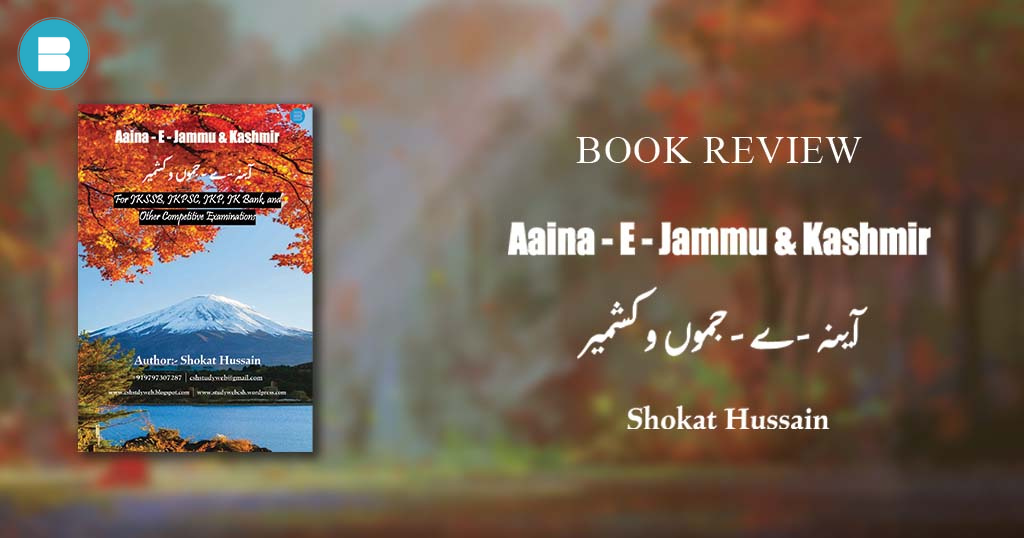
Book Review: Aaina – E – Jammu & Kashmir a Book by Shokat Hussain
Book – Aaina – E – Jammu & Kashmir Author – Shokat Hussain Blurb – Jammu and Kashmir General Knowledge Book useful for various competitive examinations like JKSSB, JKPSC, JKBANK, SSC, and other State and National level exams. Review – “Aaina – E – Jammu & Kashmir” by Shokat Hussain is a comprehensive guide to the general knowledge of the region. This book covers a wide range of topics related to Jammu & Kashmir, including its history, geography, culture, politics, economy, and current affairs. It is aimed at readers who are preparing for various competitive exams like JKSSB, JKPSC, JKBANK, SSC, and other state and national level exams. One of the book’s strengths is its coverage of Jammu & Kashmir’s political history. The book provides detailed information on the various political parties and leaders in the region, as well as their ideologies and policies. To Order: Aaina – E – Jammu & Kashmir a Book by Shokat Hussain. Click Here… It also discusses the state’s accession to India, the various constitutional provisions that govern its relationship with the Indian union, and the ongoing conflict between India and Pakistan over the region’s disputed borders. The book’s coverage of the region’s economy is also quite detailed. It includes chapters dedicated to agriculture, industry, and tourism. The author provides a wealth of statistical data and analysis, along with case studies and examples of successful businesses and entrepreneurs. This section of the book gives readers a comprehensive understanding of the economic conditions of the region. Another notable aspect of the book is its coverage of Jammu & Kashmir’s ecology and environment. The author describes the region’s diverse flora and fauna, as well as its natural resources and environmental challenges, such as deforestation, pollution, and climate change. This section provides readers with a detailed understanding of the region’s natural resources and environmental conditions. The book also discusses Jammu & Kashmir’s rich cultural heritage, including its diverse languages, religions, and customs. This section of the book provides readers with a glimpse into the cultural and social practices of the region. Shokat Hussain, the author of “Aaina-e-Jammu & Kashmir,” is from the Rajouri district of Jammu and Kashmir. He holds a Post Graduate degree in Chemistry from the University of Jammu and is qualified in CSIR NET/JRF and GATE in Chemistry. He has also done his B.Ed. from the Central University of Kashmir and BLIS from IGNOU. His qualification and academic background reflect his proficiency in research and analysis. In conclusion, “Aaina – E – Jammu & Kashmir” is an invaluable guide for anyone preparing for competitive exams or interested in learning more about this fascinating region of India. The book provides a comprehensive understanding of Jammu & Kashmir’s history, geography, culture, politics, economy, and current affairs. The author’s research and expertise in the subject matter make this book an excellent resource for students, educators, and anyone interested in understanding Jammu & Kashmir’s general knowledge. Read: Here’s a list of best career development books of all Time. Aaina – E – Jammu & Kashmir is well-written and accessible, with clear explanations and examples that make even complex topics easy to understand. It is also well-researched, with extensive references and citations throughout. The author’s background in chemistry, education, and competitive exam qualification add to the credibility of the book. Publish your book for free with BlueRoseONE and become a bestselling author. Don’t let your dream of becoming an author fade away, grab the opportunity now and publish your book – be it fiction, non fiction, poetry or more.m
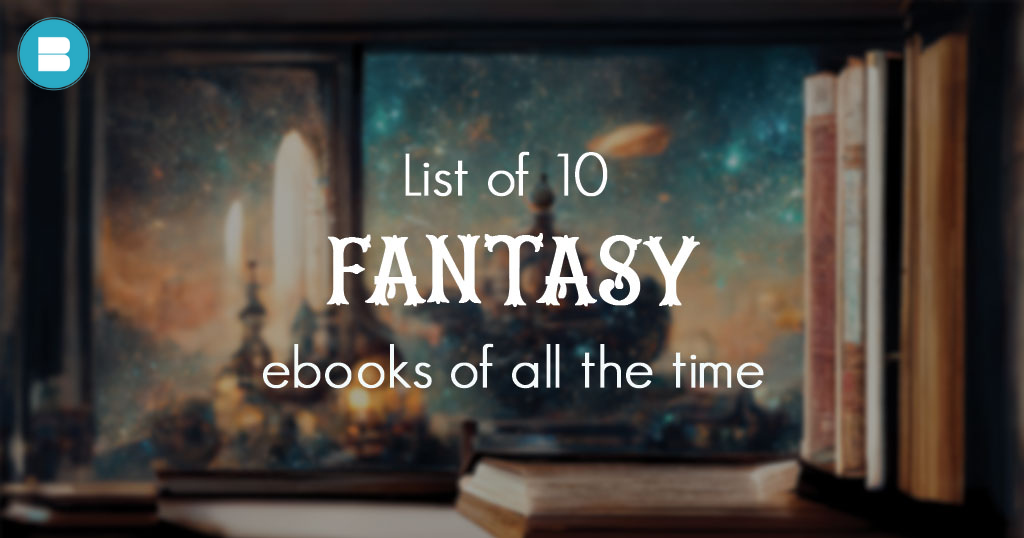
List of 10 most successful Fantasy eBooks of all time.
Looking for best Fantasy eBooks to Read? We got them for you. Fantasy is a genre of literature that takes the reader on a journey into a realm beyond the confines of the real world. It is a place where magic and mythical creatures are commonplace, and supernatural elements are a part of everyday life. Fantasy works have been captivating readers for centuries, from the tales of ancient folklore to contemporary works of fiction. The genre is known for its epic tales of adventure and heroism, as well as for more intimate character-driven stories that delve into the complexities of the human experience. The stories often explore themes of good versus evil, power struggles, coming-of-age, and quests. One of the most prominent features of the fantasy genre is the creation of a fictional world that is entirely different from our own. This world is often populated with creatures that do not exist in reality, such as dragons, unicorns, and elves. The landscapes and settings are often vividly imagined, with sprawling kingdoms, dark forests, and hidden enclaves. These worlds are often intricately detailed, with their own unique cultures, languages, and histories. Read: Here’s a list of top 10 Successful Female Poets of all time. With the advent of technology, the way we consume and experience literature has changed dramatically. The rise of electronic devices such as e-readers, tablets, and smartphones has made reading more accessible than ever before. This has also given rise to a new form of literature known as the ebook. Ebooks are electronic versions of books that can be downloaded onto electronic devices and read using a compatible app or software. This has made it easier for readers to access their favorite books while on the go, without having to carry heavy physical copies. The fantasy genre has adapted well to the ebook format, offering an enhanced reading experience with features such as interactive maps, glossaries, and hyperlinks. These elements can provide readers with a deeper understanding of the fictional world, making the reading experience more immersive. One of the advantages of ebooks is that they can be more affordable than physical books, making them an accessible option for readers on a budget. They can also be easily stored on electronic devices, allowing readers to carry an entire library with them wherever they go. Popular fantasy authors, such as J.R.R. Tolkien, George R.R. Martin, and J.K. Rowling, have all released their works in ebook format, making it easier for fans to access their favorite works. This has helped to make the genre even more accessible to a wider audience. Here we have a list of best 10 fantasy eBooks of all time – “The Lord of the Rings” by J.R.R. Tolkien “Harry Potter and the Philosopher’s Stone” by J.K. Rowling “A Game of Thrones” by George R.R. Martin “The Name of the Wind” by Patrick Rothfuss “The Hobbit” by J.R.R. Tolkien “The Conqueror Series: The Legend of Suheldev” by Amish Tripathi “Chandrakanta” by Devaki Nandan Khatri “The Aryavarta Chronicles: Govinda” by Krishna Udayasankar “Amaira” by Priyanka Pareek “The Sword of Destiny” by Tanisha Sahu “The Lord of the Rings” by J.R.R. Tolkien “The Lord of the Rings” is a high-fantasy novel written by British author J.R.R. Tolkien. The book was originally published in three volumes in 1954 and 1955 and has since become one of the most famous and beloved fantasy series of all time. The story follows hobbit Frodo Baggins as he sets out on a perilous quest to destroy the One Ring, a powerful artifact created by the dark lord Sauron that can be used to enslave the world. Accompanied by a fellowship of diverse characters, including the wizard Gandalf, the warrior Aragorn, and the elf Legolas, Frodo and his companions must traverse dangerous lands and overcome many obstacles on their journey to Mount Doom, where the Ring must be destroyed in the fires of the mountain. Along the way, they face various challenges, including battles with orcs, trolls, and other dark creatures, as well as temptation and betrayal from unexpected sources. The story is epic in scope, with a richly detailed world that includes different races, languages, and cultures, as well as a complex history and mythology. Tolkien’s writing style is characterized by a rich and poetic prose, as well as detailed descriptions of the natural world and the intricate workings of his imagined societies. The novel has been adapted into various forms of media, including a successful film trilogy directed by Peter Jackson in the early 2000s. “The Lord of the Rings” by J.R.R. Tolkien. Best Fantasy eBook to read.. You may also read: What is Plot Structure? Definition with Examples You may also like: Mistborn Series in Order: Start to Finish “Harry Potter and the Philosopher’s Stone” by J.K. Rowling “Harry Potter and the Philosopher’s Stone” is a young adult fantasy novel written by British author J.K. Rowling. It was first published in 1997 and quickly became a global phenomenon, spawning a successful series of books, films, and merchandise. The story follows the titular character, Harry Potter, a young orphan who learns that he is a wizard and is invited to attend Hogwarts School of Witchcraft and Wizardry. Along with his new friends Ron Weasley and Hermione Granger, Harry navigates the challenges of learning magic, making enemies and allies, and uncovering a sinister plot to resurrect the dark wizard Voldemort. The book is known for its richly imagined world, full of magical creatures, spells, and enchanted objects, as well as its lovable and relatable characters. Rowling’s writing style is both accessible and engaging, with a mix of humor, adventure, and emotional depth that appeals to readers of all ages. “Harry Potter and the Philosopher’s Stone” has been widely praised for its positive messages about friendship, courage, and the power of love to conquer evil. It has also been criticized by some for its depiction of stereotypes and lack of diversity. You may also read: 5 Act Structure: Definition, Examples and More You may also like: Top 10…
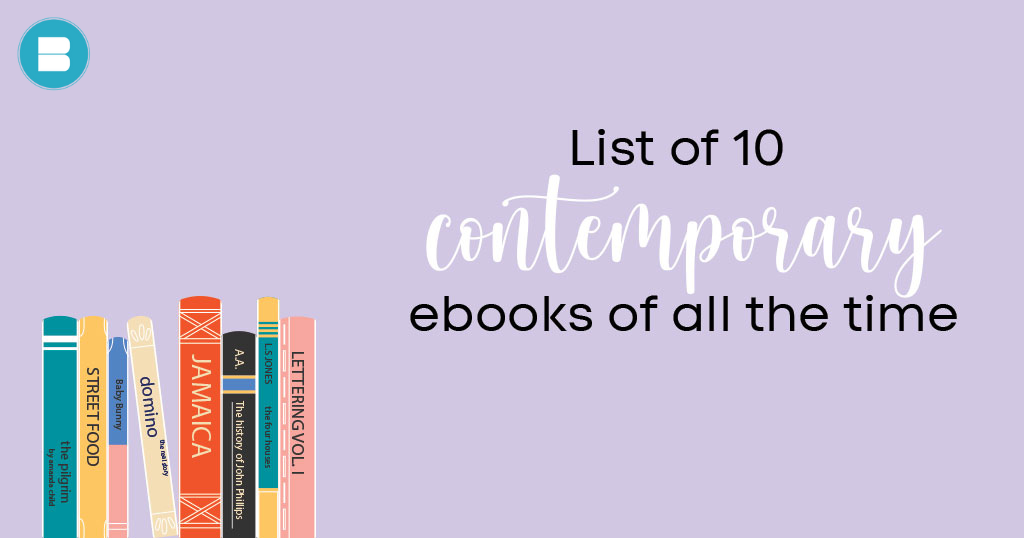
List of top 10 best contemporary eBooks of all time.
Looking for best Contemporary eBooks to Read? We got them for you. Contemporary literature is a boundless universe of written works that showcase the rich diversity of the present day. It embraces a plethora of genres, styles, and themes, all woven together by the unique perspectives and experiences of modern writers. In this day and age, contemporary literature is a reflection of our times. It explores the current issues and trends that define our world, and shines a light on the social, political, and cultural climate that surrounds us. Its pages are filled with stories that delve into the complexities of our globalized world, from the struggles of identity to the nuances of gender, sexuality, race, and technology. But what truly sets contemporary literature apart is its boldness. It challenges the norms of traditional narrative techniques, often blurring the lines between genres, and defying expectations with unconventional structures, fragmented narratives, and nonlinear timelines. Through this experimentation, contemporary writers create new ways of experiencing and understanding the world, urging readers to think outside the box. At its core, contemporary literature is a champion of diversity and inclusivity. It gives voice to the marginalized, the underrepresented, and the unheard, shining a spotlight on the richness and complexity of cultures and communities from all over the world. It breaks down barriers and challenges societal norms, exploring themes of intersectionality, hybridity, and cultural identity. Read: Here’s a list of top 10 Successful Female Poets of all time. The impact of globalization on contemporary literature is undeniable. It reflects the flow of ideas, influences, and cultural exchanges that take place across borders, and adapts to the changing landscape of literary production and consumption in the digital age. With every word written and read, it evolves, expands, and transforms, shaping the literary world of today and tomorrow. Yet amidst all this, contemporary literature never loses sight of the human experience. It speaks to the universal themes that bind us all together, from the joys of love to the pains of loss, grief, and redemption. Through its pages, we find a reflection of ourselves, our fears, and our hopes, as well as a deeper understanding of the complexities and contradictions that define the human condition. In sum, contemporary literature is a vibrant, dynamic, and endlessly fascinating realm of writing that embodies the spirit of the modern age. It celebrates diversity, challenges conventions, and reflects the world we live in, while also offering a timeless exploration of what it means to be human. Here is the list of best 10 Contemporary eBooks of all time – “The Underground Railroad” by Colson Whitehead “The Handmaid’s Tale” by Margaret Atwood “The God of Small Things” by Arundhati Roy “The Brief Wondrous Life of Oscar Wao” by Junot Diaz “Beloved” by Toni Morrison “A Visit from the Goon Squad” by Jennifer Egan “Interpreter of Maladies” by Jhumpa Lahiri “The Inheritance of Loss” by Kiran Desai “Without Hesitation” by S.K. Sharma “You Belong With Me” by Rahul Hatwal “The Underground Railroad” by Colson Whitehead “The Underground Railroad” is a Pulitzer Prize-winning novel by Colson Whitehead. The book tells the story of Cora, a slave on a Georgia plantation in the 1800s who decides to escape and seek freedom through the Underground Railroad, a network of secret routes and safe houses used by slaves to escape to the North. The novel takes a unique approach to the Underground Railroad, portraying it as an actual railroad system complete with trains and conductors, rather than just a metaphorical term for the network of people and places that helped slaves escape. The book also explores the brutal realities of slavery, as Cora faces violence, betrayal, and dehumanization on her journey to freedom. Whitehead’s writing is both poetic and powerful, immersing the reader in Cora’s world and drawing attention to the ongoing legacy of slavery and racism in America. The book has received widespread critical acclaim for its innovative approach to historical fiction and its exploration of important social issues. “The Underground Railroad” by Colson Whitehead. Best Contemporary eBook to read.. “The Handmaid’s Tale” by Margaret Atwood “The Handmaid’s Tale” is a dystopian novel by Margaret Atwood that tells the story of Offred, a woman living in the fictional Republic of Gilead, a theocratic and totalitarian state formed in the former United States after a civil war. In this society, fertility rates have drastically declined, and a strict caste system has been implemented to control women’s reproductive rights. Offred is a “handmaid,” a woman whose sole purpose is to bear children for her assigned male partner and his infertile wife. She is stripped of her identity, her freedom, and her own name, forced to live under strict surveillance and punished for any form of rebellion. Atwood’s writing is powerful and thought-provoking, challenging readers to consider the dangers of extreme religious and political ideologies and the importance of ind/ividual autonomy and freedom. The book has been adapted into a critically acclaimed television series and has become a cultural touchstone, inspiring discussions and activism around women’s rights and reproductive freedom. You may also like: Effective Book Marketing Strategies 2024 “The Handmaid’s Tale” by Margaret Atwood. Best Contemporary eBook to read.. “The God of Small Things” by Arundhati Roy “The God of Small Things” is a novel by Indian author Arundhati Roy. Set in the southern Indian state of Kerala, the book tells the story of fraternal twins, Rahel and Estha, and their family, as they navigate a complex web of social, political, and cultural tensions. Roy’s writing is vivid and poetic, capturing the sights, sounds, and emotions of life in Kerala. She explores themes of love, loss, and betrayal, as well as the impact of colonialism and caste-based discrimination on Indian society. The novel also touches on taboo topics such as incest and explores the consequences of breaking societal norms. The book won the Booker Prize in 1997 and made Roy an overnight literary sensation. It is widely regarded as a masterpiece of contemporary Indian literature and has been…
